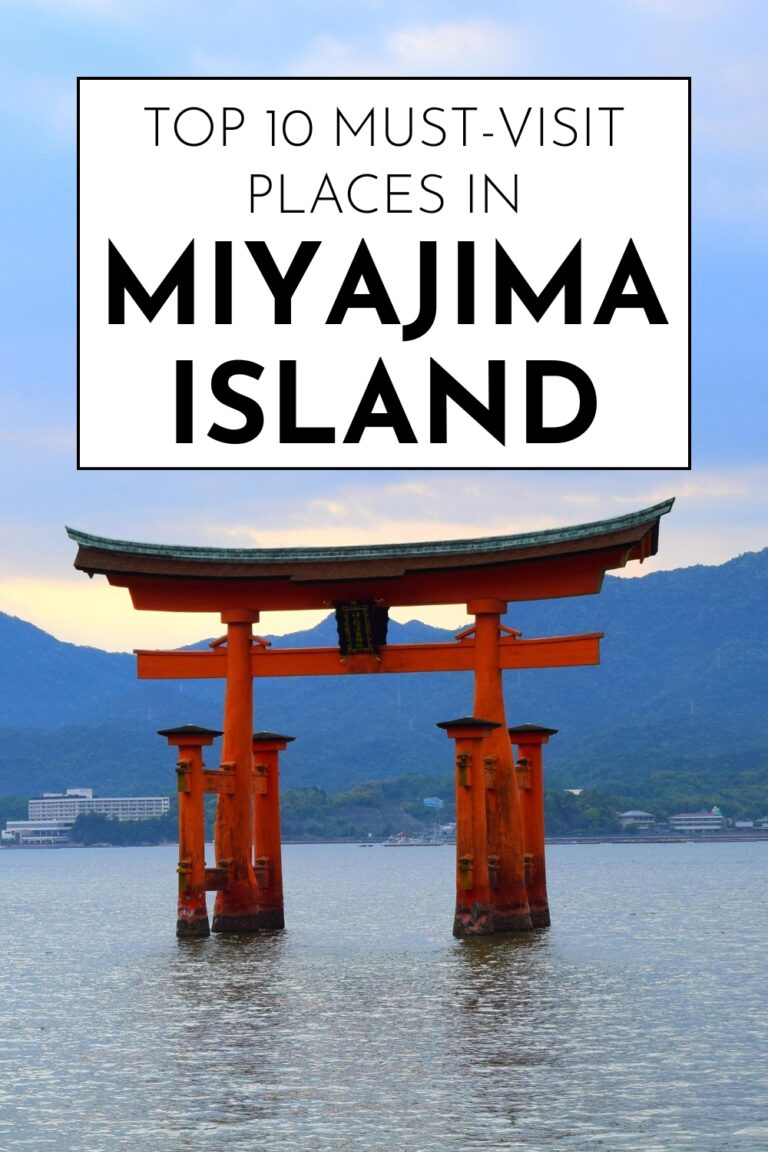Miyajima Island, officially known as Itsukushima, stands as one of Japan’s most sacred and breathtaking destinations. Located in Hiroshima Bay, this mystical island has captivated visitors for over 1,400 years with its iconic floating torii gate, ancient shrines, and pristine natural beauty.
Considered one of Japan’s three most scenic views (Nihon Sankei), Miyajima offers a perfect blend of spiritual significance, cultural heritage, and natural wonder. The island’s name literally means “shrine island,” reflecting its deep connection to Shinto traditions and its role as a sacred space where gods are believed to dwell.
From the world-famous Itsukushima Shrine that appears to float on water during high tide to peaceful hiking trails offering panoramic views, Miyajima provides unforgettable experiences for every type of traveler. Whether you’re seeking spiritual enlightenment, cultural immersion, or simply want to witness one of Japan’s most photographed landmarks, this sacred island delivers magic at every turn.
Let’s explore the ten essential destinations that make Miyajima Island a must-visit location on any Japan itinerary.
1. Itsukushima Shrine – The Floating Shrine
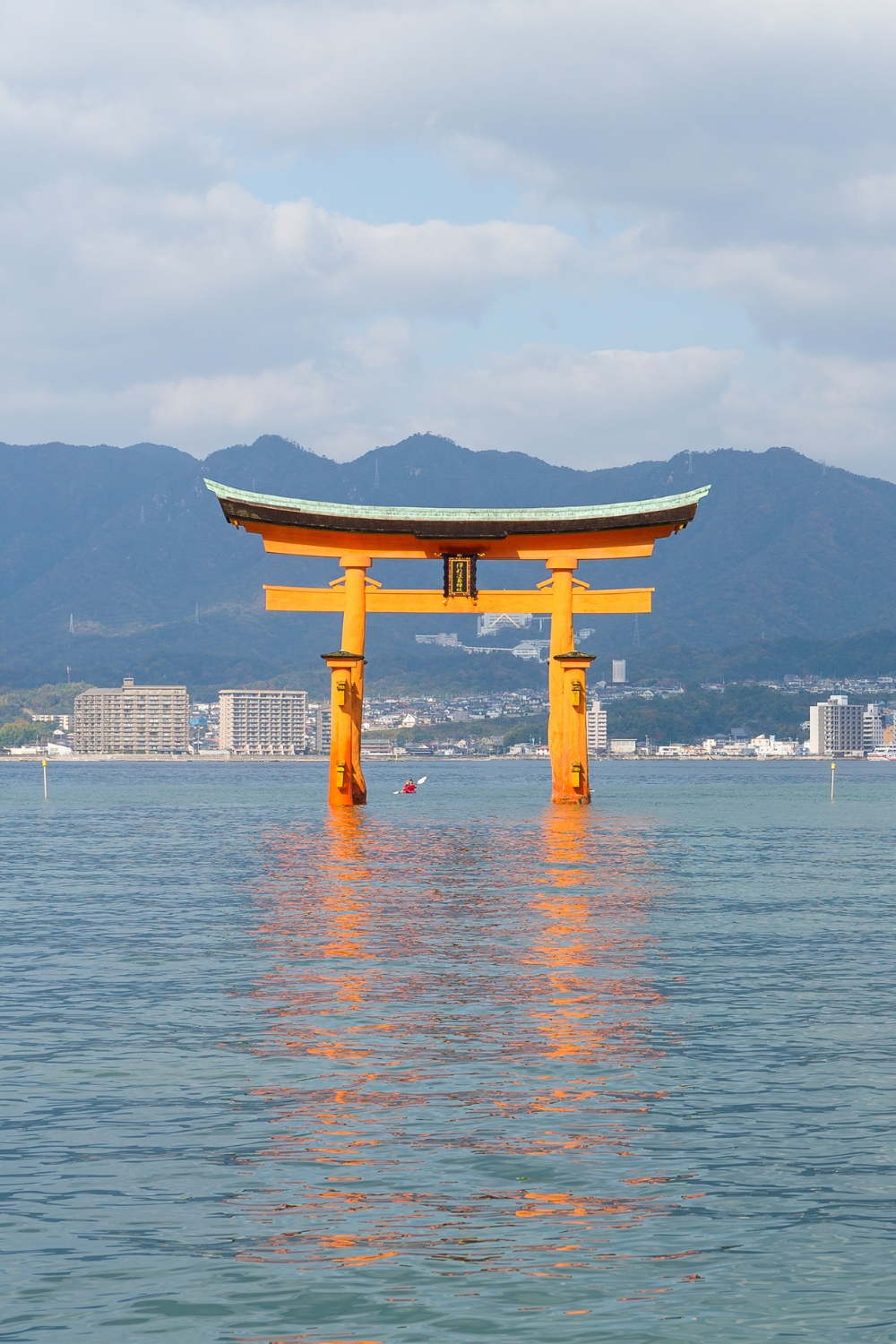
The heart and soul of Miyajima Island, Itsukushima Shrine stands as one of Japan’s most iconic and photographed landmarks. This UNESCO World Heritage site has been welcoming pilgrims and visitors since the 6th century, creating an otherworldly scene where architecture appears to float on water.
Sacred Architecture and Spiritual Significance
Built over Hiroshima Bay, the shrine’s unique design allows it to appear as if floating during high tide. The famous vermillion torii gate, standing 16 meters tall, marks the entrance to this sacred space and has become a symbol of Japan itself.
The shrine complex includes multiple buildings connected by wooden walkways and bridges. The main sanctuary houses three female deities who protect sailors and ensure safe sea travel. According to Shinto beliefs, the entire island was considered so sacred that commoners couldn’t set foot on it, requiring them to approach by boat through the torii gate.
Best Viewing Times and Photography
High tide creates the magical floating effect that makes Itsukushima Shrine world-famous. The torii gate appears to rise directly from the water, creating perfect mirror reflections during calm weather conditions.
Low tide reveals the shrine’s foundation and allows visitors to walk out to the torii gate. This provides unique photography opportunities and a different perspective on the shrine’s construction.
Best times to visit: High tide for floating effect, low tide for close-up access Photography tip: Golden hour (sunrise/sunset) creates stunning lighting Entry fee: 300 yen for adults Operating hours: 6:30 AM – 6:00 PM (varies by season)
2. The Great Torii Gate – Iconic Symbol of Japan
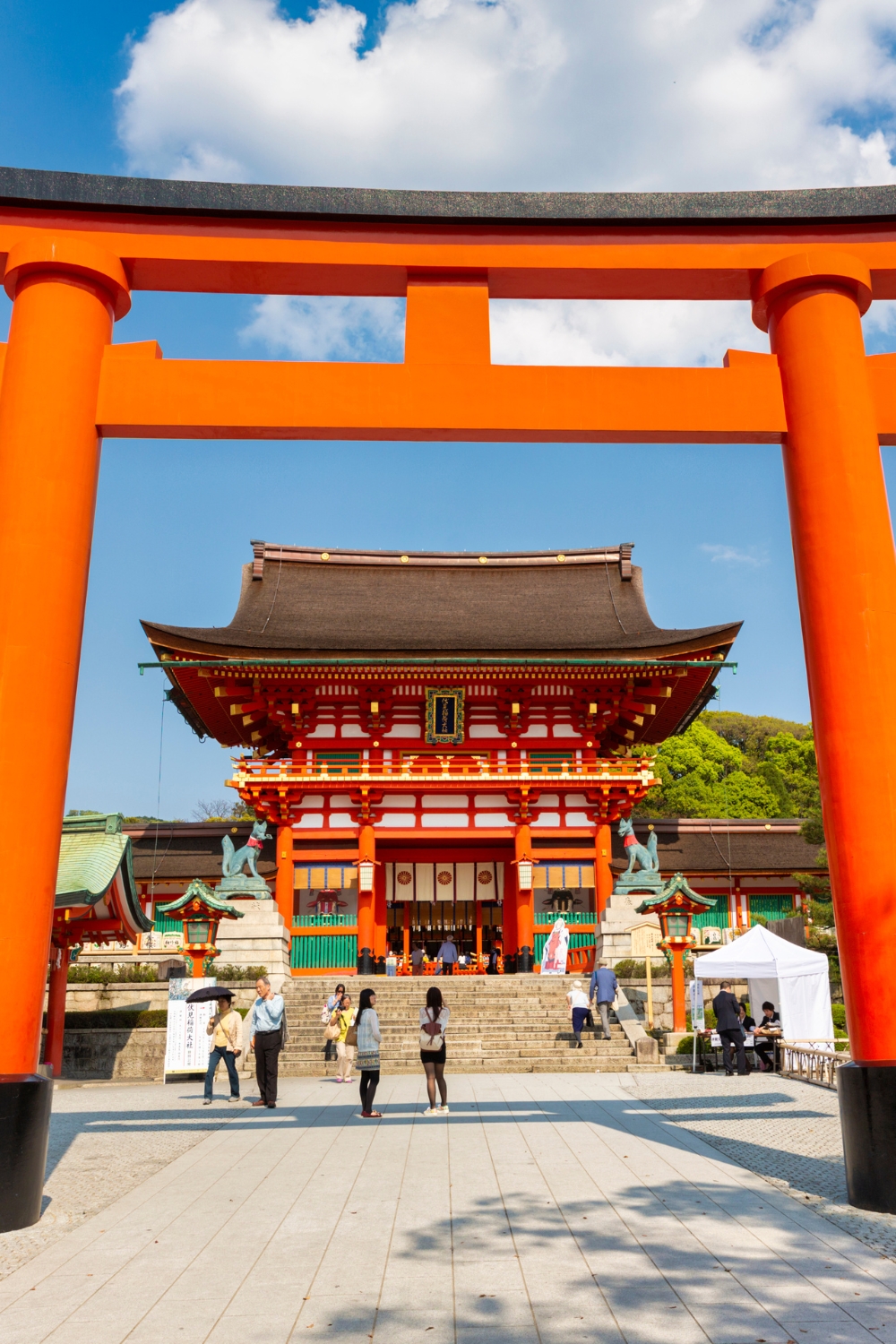
Standing majestically in Hiroshima Bay, the Great Torii Gate of Itsukushima Shrine represents one of the world’s most recognizable architectural landmarks. This massive vermillion gate has welcomed visitors to sacred Miyajima for centuries, creating an unforgettable first impression of Japan’s spiritual heritage.
Architectural Marvel and Construction
The current torii gate, reconstructed in 1875, stands 16 meters high and weighs approximately 60 tons. Made from camphor wood and painted in traditional vermillion lacquer, the gate requires regular maintenance to preserve its brilliant color and structural integrity.
The gate’s design follows traditional Japanese architectural principles, with its distinctive curved roofline and proportional beauty. At high tide, the gate appears to float effortlessly on the water’s surface, while low tide reveals its massive foundation stones and allows visitors to walk beneath it.
Changing Perspectives Throughout the Day
The torii gate offers completely different experiences depending on tidal conditions and lighting. During high tide, boats can pass beneath the gate, creating a sense of entering a sacred water realm. The gate’s reflection in calm water doubles its visual impact and creates perfect symmetry.
Low tide exposes the bay floor, allowing visitors to walk out to the gate for close-up photography and a different perspective on its massive scale. Many visitors plan their trip to experience both high and low tide views of this iconic landmark.
Height: 16 meters Best photo spots: Itsukushima Shrine deck, beach areas, ferry approach Tide times: Check local tide charts for optimal viewing Walking access: Available during low tide only
3. Mount Misen – Sacred Mountain Summit

Rising 535 meters above sea level, Mount Misen offers Miyajima’s highest peak and most spectacular panoramic views. This sacred mountain has attracted Buddhist monks and pilgrims for over 1,200 years, combining spiritual significance with natural beauty and hiking adventure.
Spiritual Heritage and Buddhist Temples
Mount Misen’s summit houses several important Buddhist temples and sacred sites. The Reikado (Eternal Fire Hall) contains a flame that has burned continuously for over 1,200 years, lit by the famous monk Kobo Daishi. This sacred fire was used to light the Peace Flame in Hiroshima’s Peace Memorial Park.
The mountain’s spiritual significance extends beyond Buddhism, with Shinto shrines and sacred rocks scattered throughout the hiking trails. Ancient monks chose this mountain for meditation and training, believing its elevation brought them closer to divine enlightenment.
Hiking Trails and Scenic Views
Three main hiking trails lead to Mount Misen’s summit, ranging from moderate to challenging difficulty levels. The Daisho-in Course offers the most gradual ascent, while the Momijidani Course provides the most scenic route through maple forests.
The summit rewards hikers with 360-degree views of the Seto Inland Sea, surrounding islands, and the Hiroshima mainland. On clear days, visitors can see as far as Hiroshima city and the Chugoku mountain range. The observation deck provides perfect spots for photography and contemplation.
Elevation: 535 meters Hiking time: 1.5-2.5 hours to summit (depending on route) Alternative access: Miyajima Ropeway (cable car) Best views: Summit observation deck, Shishi-iwa Rock
4. Miyajima Ropeway – Scenic Mountain Cable Car
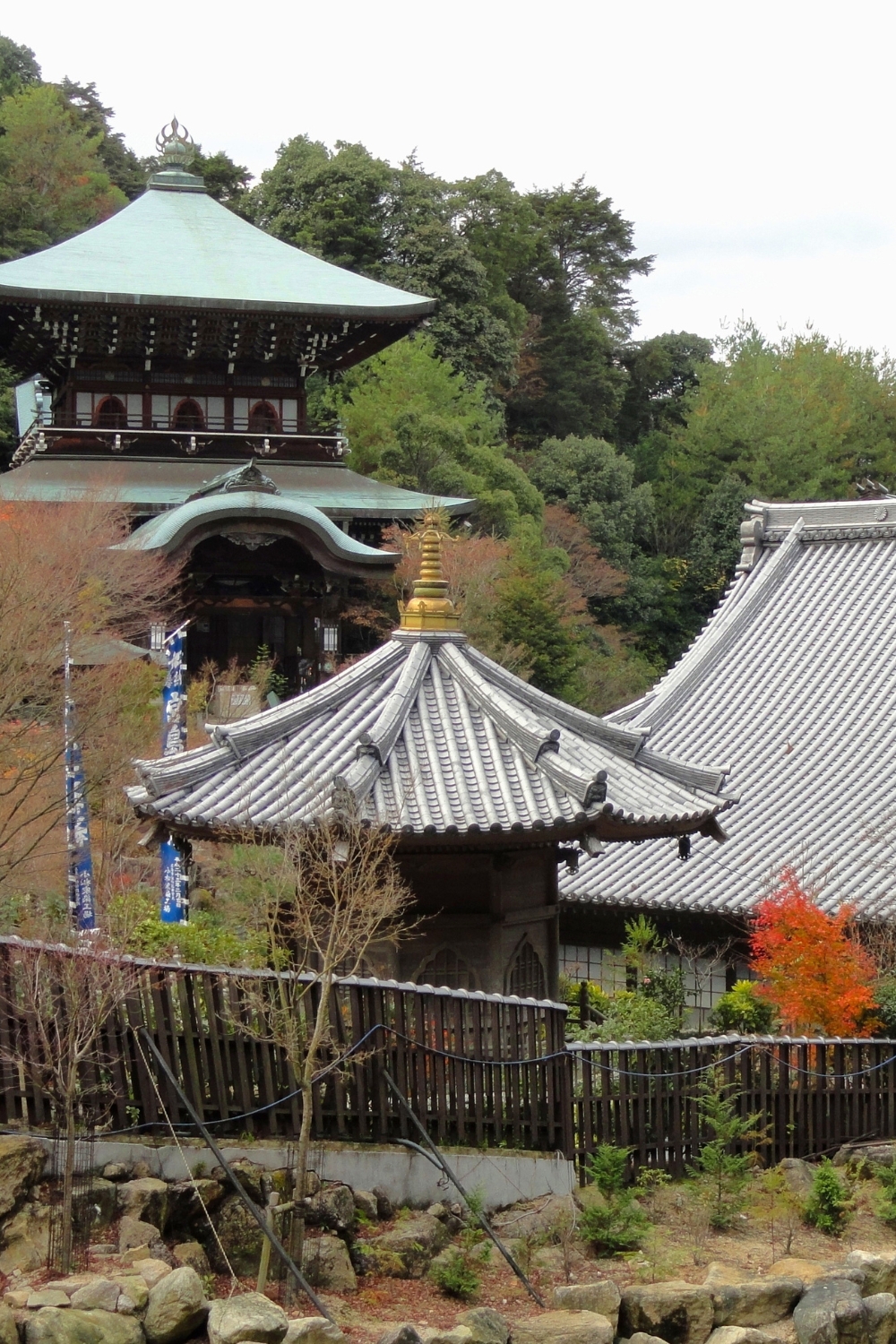
The Miyajima Ropeway provides an effortless way to reach Mount Misen’s upper elevations while enjoying spectacular aerial views of the island and surrounding seascape. This modern cable car system offers a comfortable alternative to hiking, making the mountain’s beauty accessible to all visitors.
Two-Stage Cable Car Journey
The ropeway operates in two stages, with the first cable car (Momijidani Line) carrying passengers from the base station to Kayatani Station. The second stage (Kayatani Line) completes the journey to Shishi-iwa Station, located near Mount Misen’s summit.
Each cable car offers large windows and comfortable seating, allowing passengers to fully appreciate the changing landscapes as they ascend. The journey takes approximately 15 minutes total, with smooth transitions between the two cable car lines.
Scenic Views and Photography Opportunities
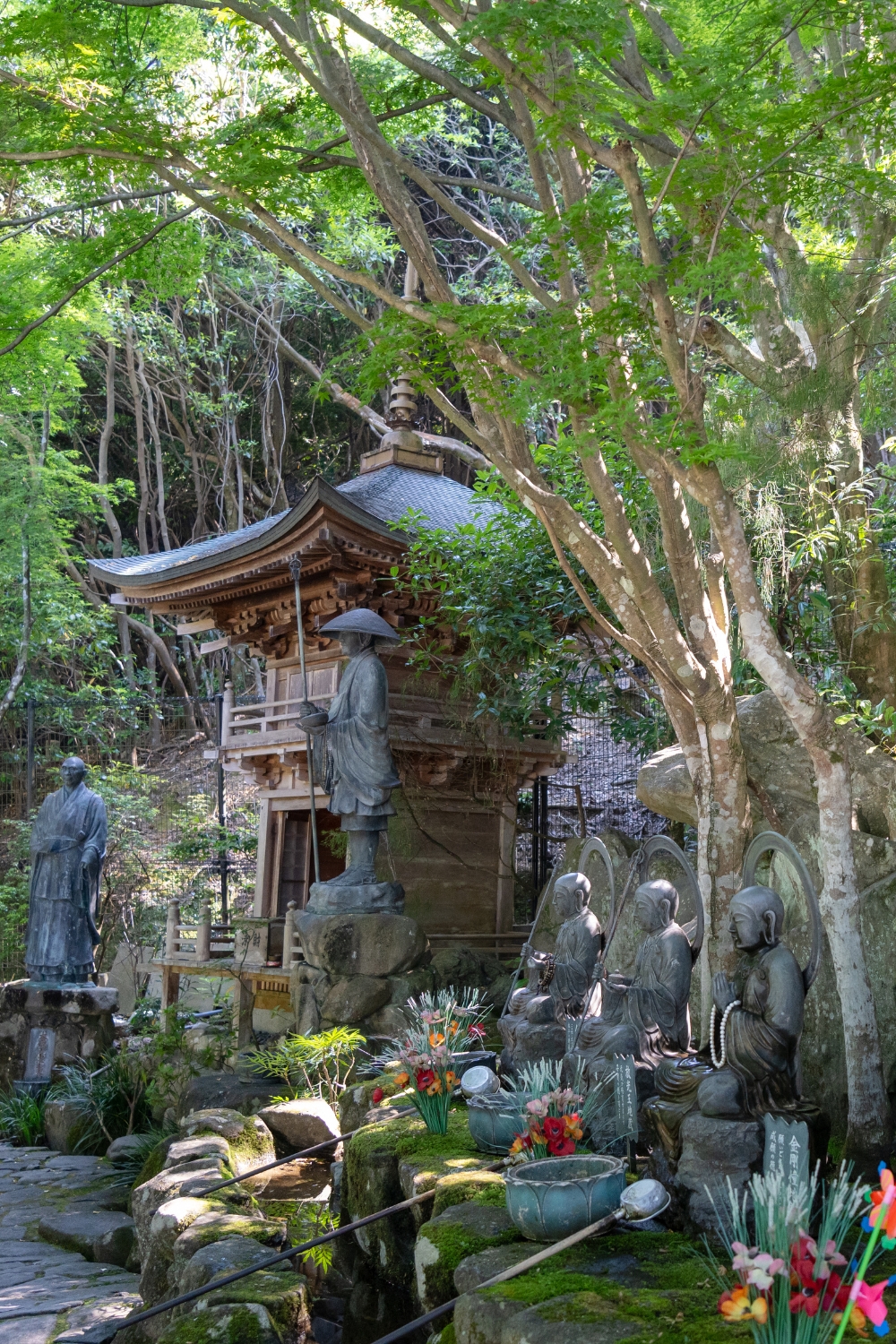
The ropeway journey provides constantly changing perspectives of Miyajima’s forests, coastline, and the Seto Inland Sea. Autumn visits offer spectacular views of colorful maple forests, while spring brings fresh green foliage and blooming flowers.
From the upper station, a short 30-minute walk leads to Mount Misen’s summit and the sacred Buddhist temples. The cable car eliminates the most strenuous part of the mountain hike while still providing access to the spiritual sites and panoramic views.
Operating hours: 9:00 AM – 5:00 PM (varies by season) Round-trip fare: 1,840 yen for adults Journey time: 15 minutes total Summit walk: 30 minutes from upper station
5. Daisho-in Temple – Buddhist Spiritual Center
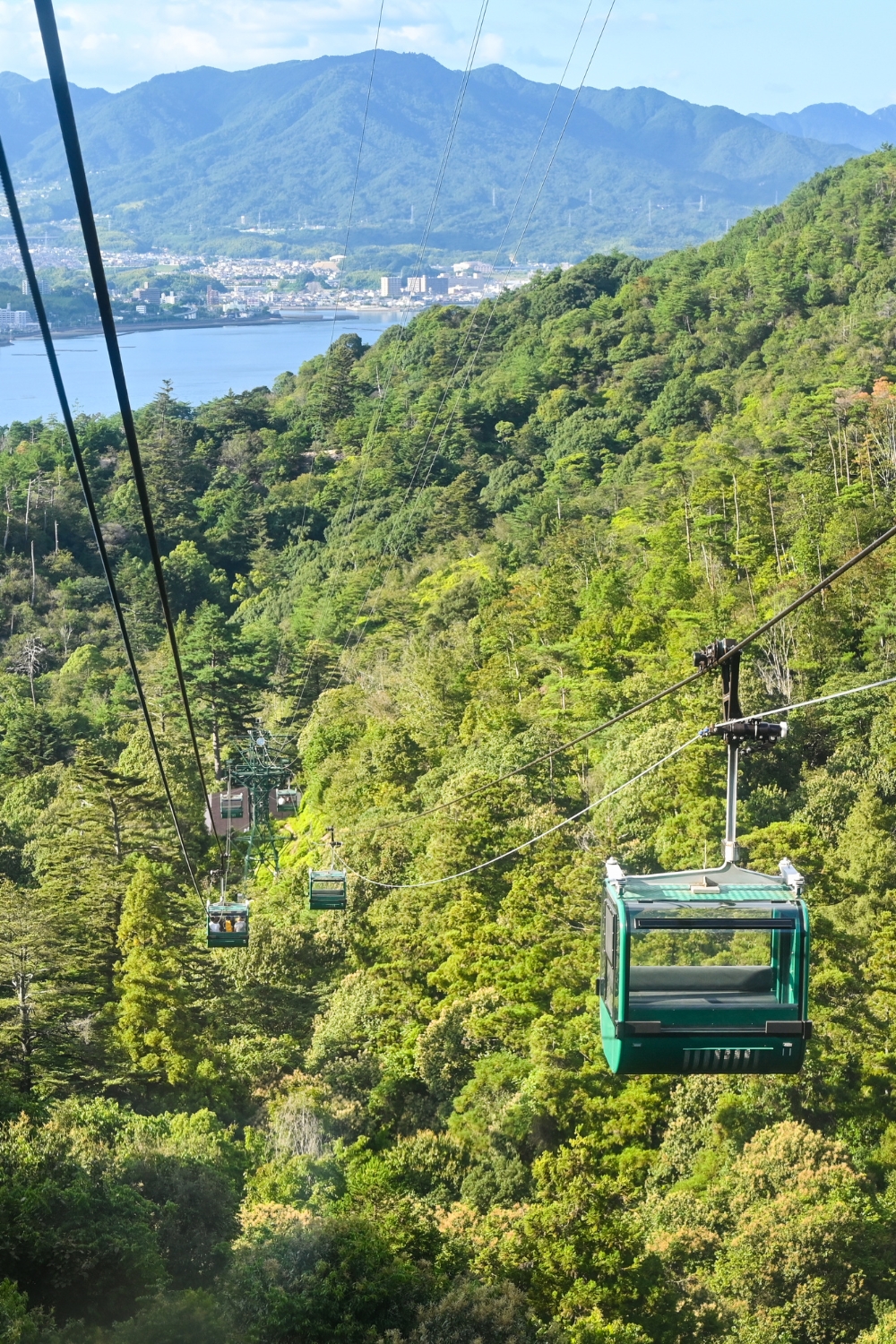
Daisho-in Temple represents Miyajima’s most important Buddhist site, offering visitors a deeply spiritual experience away from the crowds at Itsukushima Shrine. This ancient temple complex, founded in 806 by Kobo Daishi, showcases Japanese Buddhism’s rich traditions and artistic heritage.
Temple Complex and Religious Significance
The temple grounds feature multiple halls, pagodas, and sacred spaces connected by stone pathways and staircases. The main hall houses important Buddhist statues and artwork, while smaller buildings serve specific religious functions and meditation practices.
Daisho-in belongs to the Shingon sect of Buddhism, known for its esoteric teachings and elaborate rituals. The temple serves as the official temple of Mount Misen, maintaining the sacred sites on the mountain summit and preserving centuries-old Buddhist traditions.
Unique Features and Spiritual Activities
The temple’s entrance staircase features spinning prayer wheels inscribed with Buddhist sutras. Visitors can spin these wheels while climbing, creating merit and spiritual benefit according to Buddhist beliefs. The temple also houses a sand mandala created by Tibetan monks, representing the interconnectedness of all life.
The temple grounds include a cave filled with 88 Buddhist statues, representing the famous 88-temple pilgrimage route in Shikoku. Visitors can experience a symbolic pilgrimage by walking through this sacred space and offering prayers at each statue.
Founded: 806 CE Buddhist sect: Shingon Entry fee: Free Special features: Prayer wheel staircase, sand mandala, 88-statue cave
6. Momijidani Park – Maple Valley Paradise
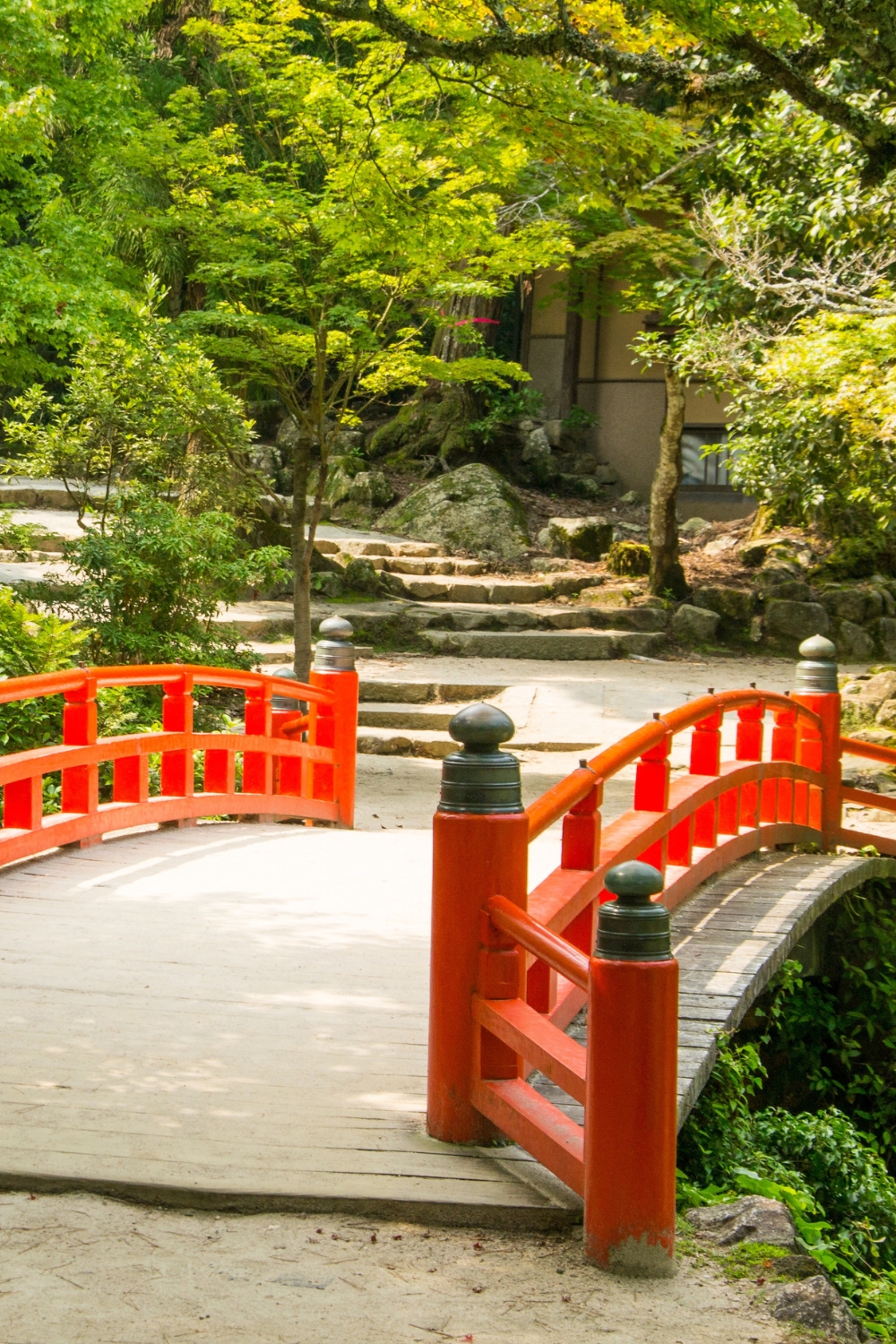
Momijidani Park, whose name literally means “Maple Valley,” transforms into one of Japan’s most spectacular autumn destinations when thousands of maple trees burst into brilliant reds, oranges, and yellows. This peaceful park offers year-round beauty and serves as the starting point for Mount Misen hiking trails.
Autumn Colors and Seasonal Beauty

The park contains over 700 maple trees of various species, creating a natural tapestry of colors during autumn months. Peak autumn foliage typically occurs from mid-November to early December, when the entire valley glows with warm colors reflected in the park’s streams and ponds.
Spring brings fresh green foliage and blooming flowers, while summer offers cool shade and peaceful walking paths. Even winter visits reveal the park’s natural beauty through bare tree branches and occasional snow-covered landscapes.
Walking Paths and Natural Features
Well-maintained walking paths wind through the park, following natural streams and crossing traditional bridges. The park’s design incorporates natural landscape features with carefully placed viewing spots and rest areas.
The park serves as the trailhead for the Momijidani hiking course to Mount Misen summit. Visitors can enjoy the park’s beauty as a standalone destination or use it as a starting point for mountain adventures. The nearby ropeway station provides easy access to upper mountain elevations.
Best visiting season: November-December (autumn colors) Walking time: 1-2 hours for full park exploration Facilities: Rest areas, public restrooms, vending machines Hiking access: Mount Misen trail starts from park
7. Miyajima Public Aquarium – Marine Life Discovery
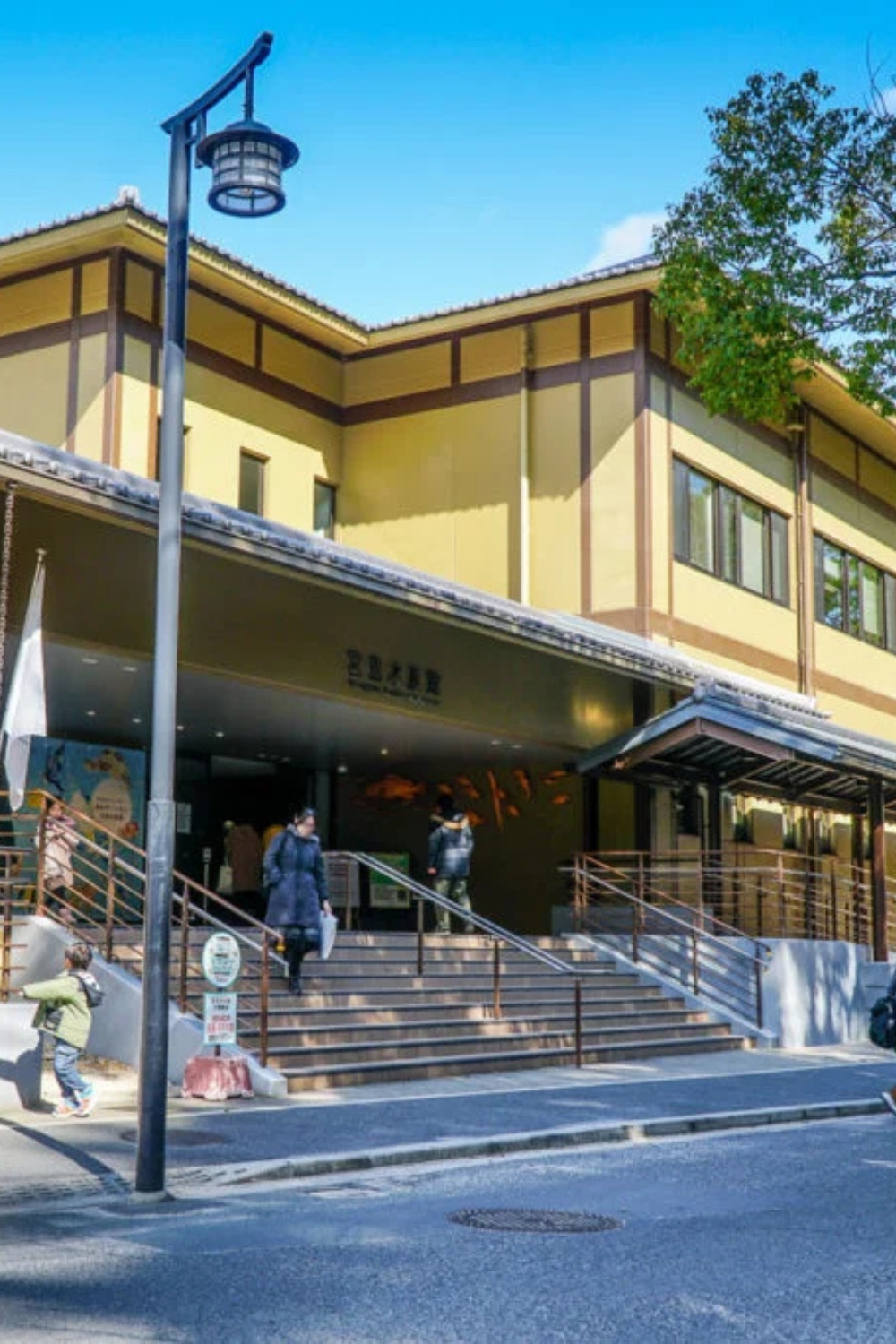
The Miyajima Public Aquarium offers fascinating insights into the marine life of the Seto Inland Sea and provides an educational complement to the island’s cultural and spiritual attractions. This modern facility showcases both local marine ecosystems and exotic species from around the world.
Local Marine Ecosystems and Conservation
The aquarium’s exhibits focus heavily on the Seto Inland Sea’s unique marine environment, displaying fish species, crustaceans, and other sea life that inhabit the waters surrounding Miyajima. Interactive displays explain the relationship between the sea and local culture, including traditional fishing methods and marine conservation efforts.
Special exhibits highlight the importance of preserving the Seto Inland Sea’s delicate ecosystem. The aquarium participates in research and conservation programs, educating visitors about environmental protection and sustainable marine resource management.
Family-Friendly Activities and Education
The aquarium features touch pools where children can safely interact with sea creatures like starfish and sea cucumbers. Regular feeding demonstrations and educational programs provide entertaining ways to learn about marine life and ocean conservation.
The facility includes a gift shop featuring marine-themed souvenirs and educational materials. The aquarium’s location near other island attractions makes it easy to combine with temple visits or hiking activities for a full day of diverse experiences.
Operating hours: 9:00 AM – 5:00 PM Admission: 1,420 yen for adults Special features: Touch pools, feeding demonstrations, local marine life focus Best for: Families with children, marine life enthusiasts
8. Miyajima History and Folklore Museum – Cultural Heritage
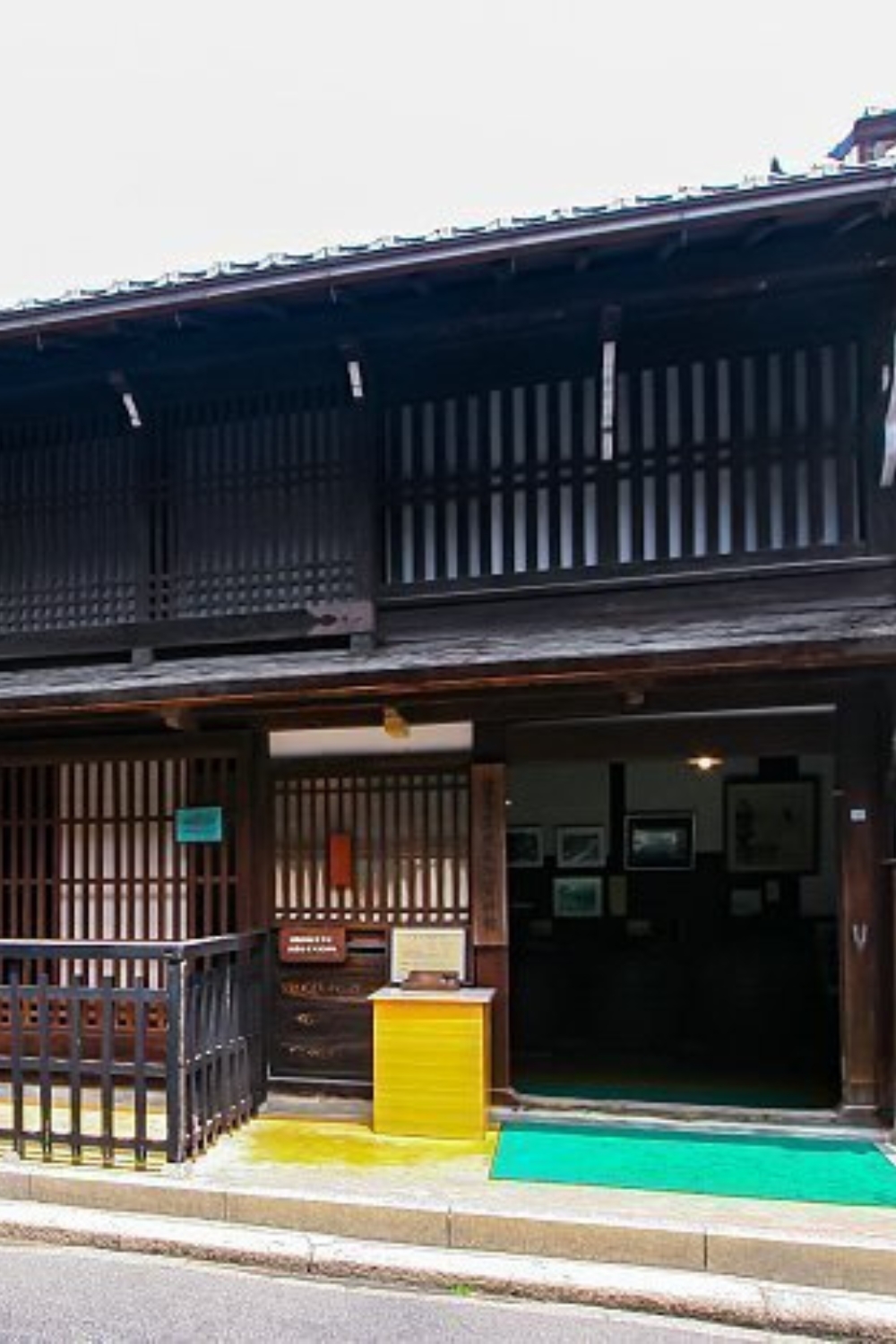
The Miyajima History and Folklore Museum provides essential context for understanding the island’s rich cultural heritage and spiritual significance. Housed in traditional buildings, this museum offers comprehensive insights into local history, customs, and the development of Miyajima as a sacred destination.
Historical Artifacts and Cultural Exhibits
The museum’s collection includes ancient artifacts, historical documents, and traditional crafts that tell the story of Miyajima’s development over centuries. Exhibits cover the island’s role in Japanese history, the evolution of Itsukushima Shrine, and the daily lives of people who have called this sacred island home.
Traditional items displayed include ceremonial objects, historical clothing, and tools used in various island industries. The museum also features models and reconstructions that help visitors understand how the island and its famous shrine appeared in different historical periods.
Traditional Architecture and Building Design
The museum buildings themselves represent important examples of traditional Japanese architecture, with wooden construction techniques and design elements that complement the island’s historical character. The buildings originally served as merchant houses and residential structures, providing authentic settings for the cultural displays.
Walking through the museum offers opportunities to experience traditional Japanese interior spaces, including tatami mat rooms, wooden corridors, and traditional gardens. The architecture serves as both container and content, immersing visitors in Japan’s cultural heritage.
Operating hours: 8:30 AM – 5:00 PM Admission: 300 yen for adults Languages: Japanese with some English explanations Building style: Traditional Japanese architecture
9. Treasure Hall – Sacred Art Collection
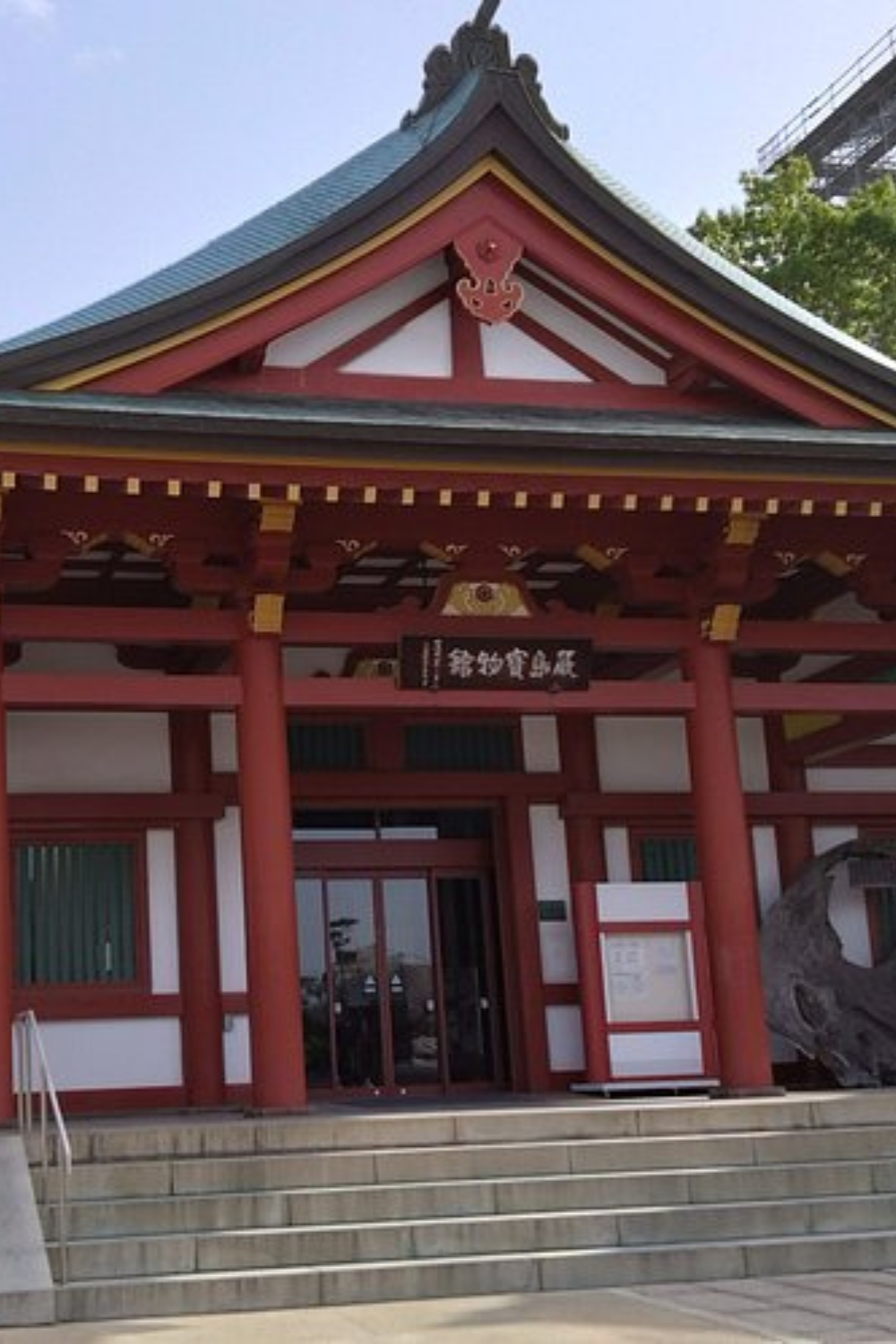
The Treasure Hall houses Itsukushima Shrine’s most precious religious artifacts, artwork, and historical treasures. This specialized museum provides intimate access to sacred objects that have been preserved for centuries, offering unique insights into Japanese religious art and craftsmanship.
Sacred Artifacts and Religious Art
The collection includes ancient scrolls, Buddhist statues, ceremonial objects, and paintings that demonstrate the highest levels of Japanese artistic achievement. Many items date back several centuries and represent the wealth and importance of Itsukushima Shrine throughout Japanese history.
Particularly notable are the illuminated sutras (religious texts) decorated with gold and silver, considered among Japan’s most beautiful examples of religious calligraphy. The collection also includes masks, costumes, and musical instruments used in traditional shrine ceremonies and performances.
Cultural Significance and Preservation
The Treasure Hall serves an important role in preserving and displaying cultural artifacts that might otherwise remain hidden from public view. The climate-controlled environment ensures these precious items remain in excellent condition for future generations to appreciate and study.
Educational displays explain the religious and cultural significance of each artifact, helping visitors understand the role these objects played in Japanese spiritual life. The museum represents a bridge between past and present, making ancient culture accessible to modern audiences.
Location: Near Itsukushima Shrine Admission: 300 yen for adults Collection highlights: Illuminated sutras, ceremonial objects, religious art Photography: Generally not permitted inside
10. Miyajima Beaches and Coastal Areas – Natural Beauty
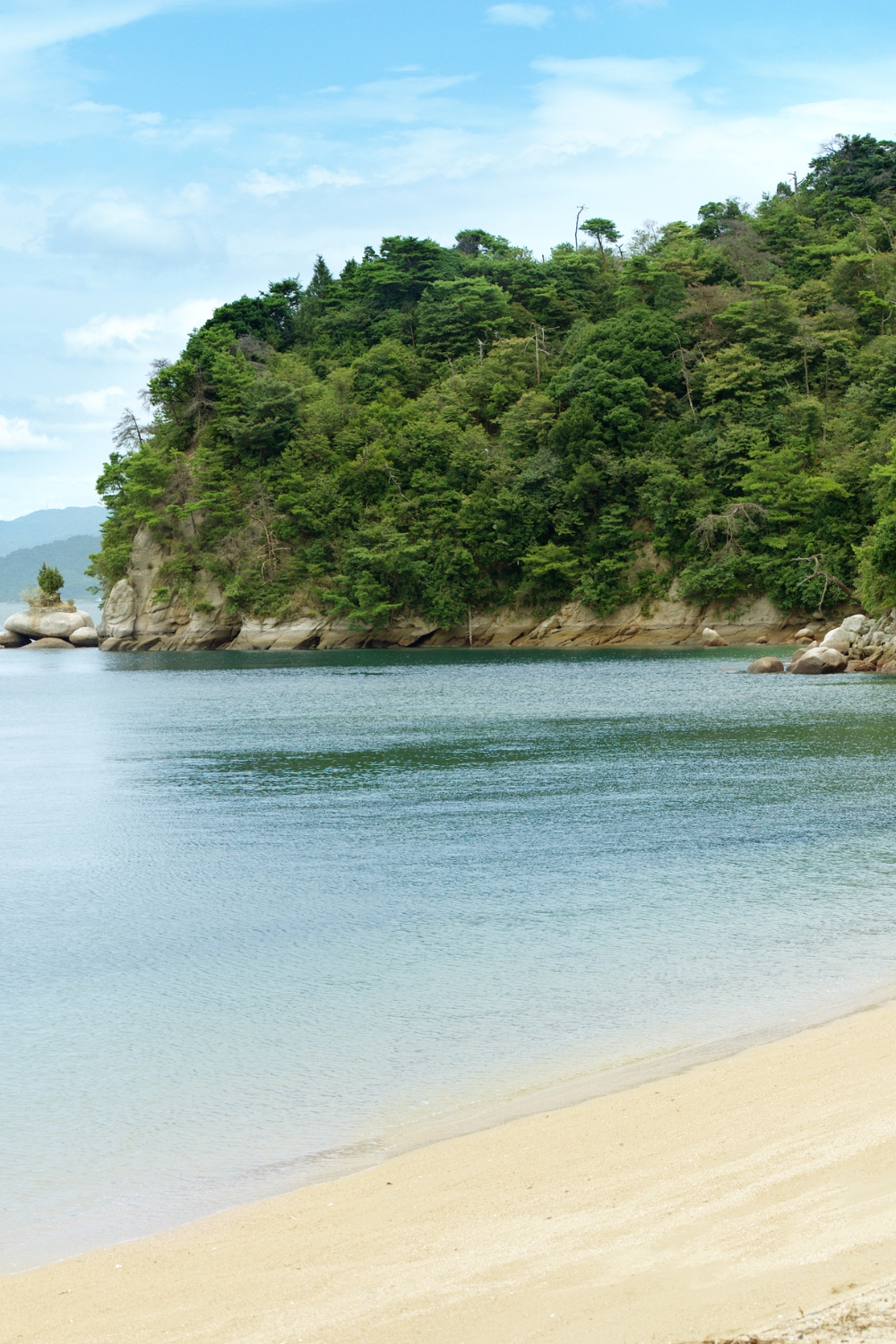
Miyajima’s coastline offers beautiful beaches and scenic coastal areas that provide peaceful alternatives to the island’s more crowded cultural attractions. These natural spaces offer opportunities for relaxation, photography, and experiencing the island’s relationship with the sea.
Sandy Beaches and Swimming Areas
Several beaches around the island provide safe swimming areas during summer months, with the most popular located near the ferry terminal and main tourist areas. The beaches offer different perspectives of the famous torii gate and provide excellent spots for photography during various tidal conditions.
Beach areas feature clean sand and clear water, making them suitable for families with children. Swimming is most popular during summer months, while spring and autumn visits offer pleasant weather for beach walks and coastal exploration.
Coastal Walking and Scenic Views
Walking paths along the coastline provide access to quieter areas of the island away from main tourist crowds. These coastal routes offer constantly changing views of the Seto Inland Sea, neighboring islands, and the mainland coastline.
The coastal areas provide excellent vantage points for sunrise and sunset photography, with the torii gate creating dramatic silhouettes against colorful skies. Many visitors find these peaceful coastal spaces perfect for contemplation and experiencing the natural beauty that makes Miyajima sacred.
Best beaches: Near ferry terminal, Tsutsumigaura Beach Swimming season: June through September Activities: Beach walking, photography, swimming, sunset viewing Facilities: Public restrooms, vending machines at main beaches
Planning Your Miyajima Island Adventure
Getting to Miyajima Island
Miyajima Island is accessible by ferry from Miyajimaguchi on the mainland, with regular departures throughout the day. The ferry journey takes approximately 10 minutes and offers beautiful views of the approaching island and torii gate.
Two ferry companies operate the route: JR West (covered by JR Pass) and Miyajima Matsudai. Both ferries provide similar service, with JR ferries offering slightly better views of Itsukushima Shrine during the approach.
Best Time to Visit Different Attractions
Spring (March-May): Pleasant weather, fewer crowds, cherry blossoms in some areas Summer (June-August): Beach activities, longer daylight hours, hot and humid weather Autumn (September-November): Spectacular fall colors, ideal weather, peak tourist season Winter (December-February): Fewer crowds, clear mountain views, cold temperatures
Accommodation and Dining Options
While day trips are popular, staying overnight on Miyajima allows for sunset and sunrise photography of the torii gate. The island offers traditional ryokan (Japanese inns) and modern hotels, with some providing views of Itsukushima Shrine.
Local specialties include oysters, maple leaf-shaped cookies (momiji manju), and fresh seafood. Many restaurants offer views of the shrine and bay, combining excellent food with spectacular scenery.
Cultural Etiquette and Island Rules
Miyajima remains a sacred space, requiring respectful behavior throughout the island. Dress modestly when visiting religious sites, follow photography restrictions, and maintain quiet behavior in temple areas.
The island’s deer population is protected and feeding them is prohibited. While the deer appear friendly, maintain respectful distance and avoid feeding them human food, which can harm their health.
Conclusion
Miyajima Island offers an extraordinary blend of spiritual significance, natural beauty, and cultural heritage that represents the very best of traditional Japan. From the iconic floating torii gate that has inspired countless visitors to the sacred mountain peaks where Buddhist monks have meditated for centuries, every corner of this mystical island tells a story of faith, beauty, and human connection to the natural world.
These ten must-visit destinations showcase the island’s incredible diversity, from ancient shrines and temples to peaceful beaches and scenic mountain views. Whether you’re drawn by spiritual curiosity, cultural interest, or simply the desire to witness one of the world’s most beautiful landscapes, Miyajima delivers experiences that resonate long after your visit ends.
The island’s greatest strength lies in its ability to offer both profound spiritual experiences and simple natural beauty, making it accessible to visitors regardless of their interests or backgrounds. The combination of world-class cultural sites, stunning natural scenery, and warm Japanese hospitality creates an atmosphere that feels both sacred and welcoming.
Plan your Miyajima adventure with enough time to experience both the iconic highlights and the quieter moments of contemplation that make this island truly special. Whether you visit for a single day or stay longer to fully immerse yourself in its magic, Miyajima Island will leave you with memories and experiences that capture the essence of Japan’s spiritual and natural heritage.
